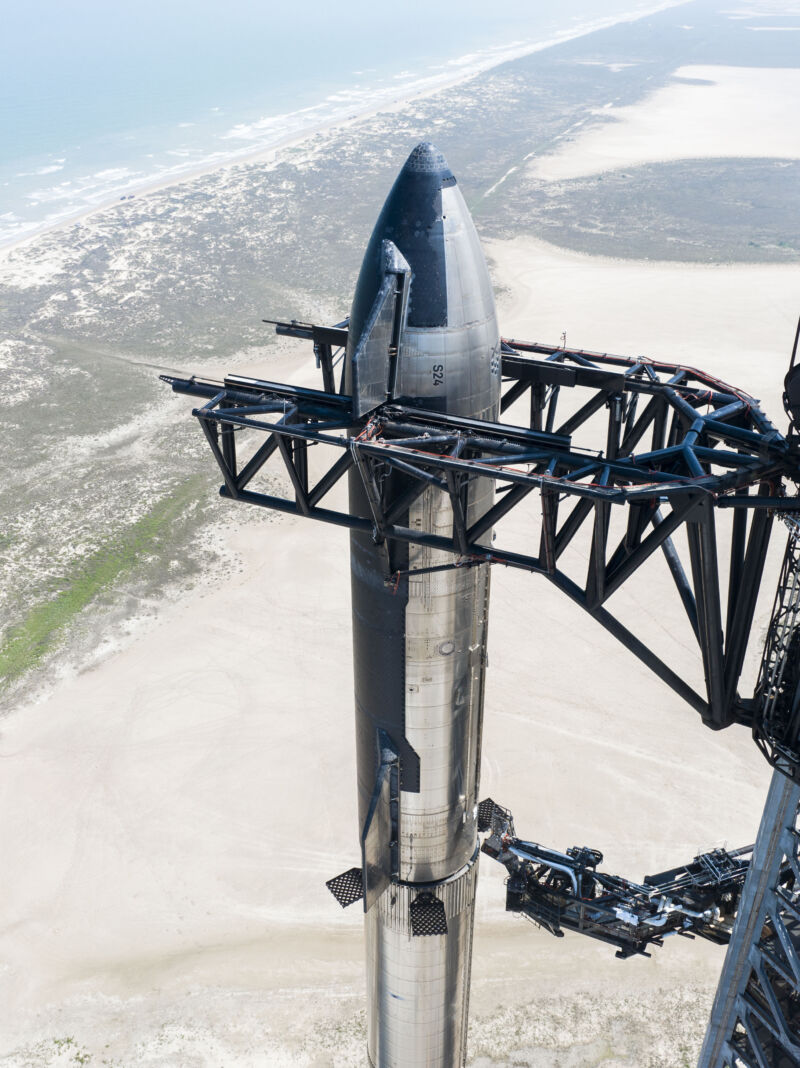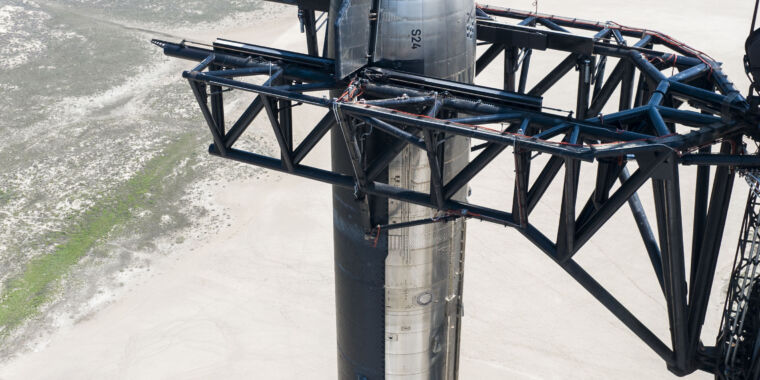
SpaceX
SOUTH PADRE ISLAND, Texas—For the second time, SpaceX engineers and technicians are working through the final hours of preparations for the launch of the Starship’s Super Heavy booster and upper stage.
The company’s 62-minute launch window opens Thursday at 8:28 a.m. local South Texas time (12:00 UTC). This attempt follows a countdown that was called off about 10 minutes before launch on Monday morning. The delay was caused by a frozen pressure relief valve that could not be controlled remotely. SpaceX took the opportunity to complete a wet-dress rehearsal, fully fueling the launch vehicle and bringing the countdown close to launch, without igniting the vehicle’s 33 main engines.
Since then, the company has addressed the valve problem and completed the painstaking process of restocking the Starbase launch facility’s massive propellant tanks with liquid oxygen and methane.
Given the countdown and testing completed on Monday, confidence is higher Thursday in SpaceX to go all the way to T-0 and launch the Super Heavy rocket. This is by no means certain, but if the weather is favorable and there are no range issues, there is probably a 50 percent or more chance of a successful countdown.
SpaceX calls this Starship launch an “integrated flight test.” It is the first time the massive Super Heavy rocket has taken off and the first time both vehicles have flown together. According to the nominal flight plan, the Super Heavy rocket will propel Starship to space and, after separation, attempt to make a controlled splash in the Gulf of Mexico, about 30 to 35 km off the coast of Texas. SpaceX will not attempt to recover the booster during this flight.
In the meantime, the Starship vehicle will attempt to ascend to an altitude of 235 km and “close to orbit”. Starship’s engines shut down after 9 minutes and 20 seconds into flight, at which point the vehicle will coast for over an hour before entering Earth’s atmosphere over the Pacific Ocean.
It will not complete a full orbit and is expected to plummet at high speed about 140 miles (225 km) north of the Hawaiian island of Oahu. Unlike future flights, Starship will not attempt a powered descent. According to the nominal timeline, this happens 90 minutes after launch.
The most likely outcome is that something goes wrong during this flight. Super Heavy will be the largest and most powerful rocket ever launched from Earth, and SpaceX founder Elon Musk has previously said that this Super Heavy rocket, known as Booster 7, is based on an older design. The company has more confidence in its next first stage, Booster 9, which is almost ready to fly. The primary goal of this mission is therefore to collect as much data as possible about the performance of Super Heavy and Starship during flight.
As long as that flight lasts.
A webcast for this launch attempt begins approximately 45 minutes before launch.
Starship second launch attempt.

